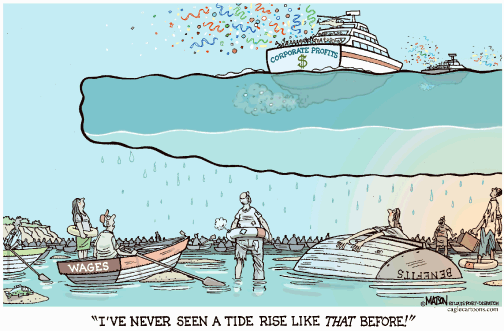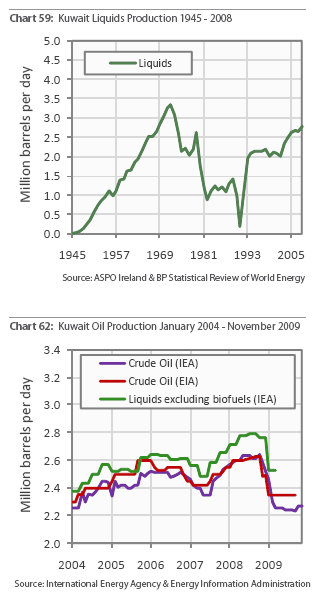Nem akar beindulni a KKV szektor az USA-ban. Mindezt sikerült annyira vicces köntösben megfogalmazni, hogy csak na. A hír:
No Job Growth for Small Business Spurs Recovery Doubt
Small businesses are becoming the Achilles heel of the U.S. recovery by limiting growth and job creation. Companies with fewer than 500 employees, such as Phoenix Technologies Ltd. and Sonic Corp., helped lead the economy out of the four recessions since 1980. This time, they continue to cut capital spending and dismiss workers, eliminating 3,000 jobs in January, according to Roseland, New Jersey-based Automatic Data Processing Inc., the world’s largest payroll processor.Improvement in the unemployment rate, which fell to 9.7 in January from 10 percent in December, may stall later this year if these firms aren’t hiring, and growth likely won’t meet the median 2.7 percent annual rate forecast for 2010 by 67 economists in a Jan. 14 Bloomberg News survey.“Will you have a sustainable recovery a few years down the road without getting some small-business spending? No,” Cary Leahey, senior managing director at Decision Economics Inc. in New York and a former White House economist, said in an interview. “Wall Street gets it.”
A 'Wall Street gets it' kifejezésnek rengeteg értelmezési lehetősége van, ebből kettőt kiemelek: (1) 'Wall Street gets it' = A tőzsde érti ezt, tisztában van mindezzel, felfogja. (2) 'Wall Street gets it' = A vólsztrítiek kapják meg (azt, ami miatt nincs fentartható fejlődés)
Most komolyan: szerintetek melyikre gondoltak? Emlékeztek erre a képre?

A lecsorgó haszon, igen-igen. Ez a haszon ez egy fura jószág: felfelé csorog. Szerintem nem hallott még a gravitációról.
Optimism ‘Stalled’“It has been a very difficult year, and 2009 did not end on an uplifting note,” William Dunkelberg, chief economist for the federation in Philadelphia, said in the report. “Optimism has clearly stalled, in spite of the improvements in the economy.”Twenty-two percent of the group’s members reduced employment in December, while 10 percent added workers. The federation will release its January data tomorrow. Investors shouldn’t assume there’s value in small caps during this recovery, according to Robert Olstein, who manages the $14 million Purchase, New York-based Olstein Strategic Opportunities Fund, which focuses on small businesses.“Smaller startups are having a really hard time,” Olstein said in an interview. “We’re looking for companies that have great balance sheets that have run into some kind of temporary problems.”
Meg lehet nyugodni: problémáink átmenetiek. Igaz ugyan, hogy a szektorbeli cégek 22%-a elbocsátásokban van és csak 10%-nál van 'üresedés', felvétel. Állítólag az optimizmus megtorpant, dacára a gazdasági növekedés nyilvánvalóságának.
Nem értem az embereket...
Akárhogy is: ha gazdasági növekedést tervezünk, kéne hozzá energia. Íme egy meglehetősen ambiciózus elképzelés:
Kuwait Targets 4 Million Barrels a Day Oil Production by 2020
Kuwait aims to boost crude oil output capacity to 4 million barrels a day by 2020, Kuwait Oil Co.’s Mohammad A. Husain said. The country will maintain this output level to 2030, he said at a conference in Abu Dhabi today.
Beteszek egy ábrát, minden jobban látszik rögtön. (Forrás: BP statistical Review of Energy, EIA, IEA)

Kuvait teljes olajtartaléka kb. 50 milliárd hordó. (A hivatalos szám ennek a duplája, 100 milliárd volt, ám 2 éve kiszivárgott, hogy csaltak kicsit a 80-as években (mint mindegyik OPEC-tagország), hogy emelhessék a kvótájukat, és többet adhassanak el. (Az OPEC-nél a készletekhez lövik be a maximális kvótát, ha tehát többet akarnak eladni, meg kell emelni a készleteket. Ez gyakorta csak papíron sikerül.)
Számoljunk egy nagyon gyorsat. Kuvait most kb. 2.6 mbpd olajat (all liquids) termel. Képzeljük el azt, hogy 2020-ra összejön nekik a napi 4 millió hordó. Ha lineáris a növekedés (nem az lesz [?] de tegyük fel, akkor a következő 10 évben 3.3 mbpd lesz az átlagos termelés. Aztán még 10 évig 4 mbpd. Mennyi olaj ez összesen?
Teljes kitermelés = (3.3 mbpd X 365 X 10) + (4 mbpd X 365 X 10 )
Az annyi mint: 3650 X (3.3 + 4)
Az meg: 26 milliárd 645 millió hordócska. A készletük fele, inkább több. Meglátásom: nagyon bajos lesz fenntartani ezt a flow rate-et, ekkora mérvű ürülés mellett. Mondjuk úgy, hogy még soha, senkinek sem sikerült.
Node, majd meglássuk, vak is aszonta.
Van ennek egy realistább verziója is: Abu-Dhabi (Abu-Dzabi?). Az UAE fővárosa, Dubai után a második legnagyobb város is egyben. Meghatározó cégük, az ADCO 1.4 mbpd-ről 1.8 mbpd-re szeretné fokozni a termelést. Ez nem teljesen irreális (bár a készlet-adatokat most nem tárgyalnám, hely- és időhiány okán.)
Abu Dhabi’s ADCO Plans Exploration, Appraisal of Marginal Fields
Abu Dhabi National Oil Co.’s onshore unit Abu Dhabi Co. for Onshore Oil Operations plans exploration and appraisal of marginal fields to achieve part of its 1.8 million barrel-a-day oil production target, General Manager Munim Saif al-Kindy said in Abu Dhabi today. The company is producing 1.4 million barrels a day now, he said.
Most olvassunk egy kicsit egy gyakran nem a megfelelő helyiértékén kezelt problémáról: nincs elég energetikai szakember. Hát igen, így jár az, aki túl sok befektetési tanácsadót és médiaszakost képez. Ha mindenki szolgáltatni akar, mert az a csuda fejlett, akkor egyszer csak kifogyunk a cuccból, ami alapot teremthet(ne) arra, hogy szolgáltatni tudjunk.
Mi például atomerőművet nem tudunk építeni (na jó, metrót se nagyon), az ausztráloknál pedig a szénhidrogén-szektor a problémás. (Nálunk is az lenne, de nekünk nem nagyon van szénhidrogénünk, úgyhogy nem kell attól tartanunk, hogy fokozzuk a termelést.)
A hír:
Labor Shortage May Increase Australian LNG Costs, Fitch Says
An emerging skills shortage may increase costs and cause delays for companies developing liquefied natural gas projects in Australia, Fitch Ratings said. Ventures in Western Australia proposed by oil and gas producers including Chevron Corp. and Woodside Petroleum Ltd. and companies in Queensland planning to convert gas extracted from coal seams into LNG may need 60,000 workers at the peak of construction, Fitch said.“First movers will have a distinct advantage,” while Queensland LNG projects may be driven to consolidation, Fitch’s Sydney-based analysts Steve Durose and Sajal Kishore wrote in their 2010 outlook for the industry.
Végül itt egy cikk. Nem írok hozzá érdemben egy büdös mukkot sem, csak ideteszek pár részt belőle. Szerintetek miről szól ez? Úgy értem: mi a fene van a háttérben? Kvóta, a kibocsátott CO2 tonnánkénti ára, kvótakereskedelem… nagyon bonyolódik az ügy.
Addig tiszta, hogy a megújulókba fektetni csak akkor térül meg, ha valamilyen módon olcsóbbak lesznek a nem megújulóknál. Probléma: a megújuló energiaforráson alapuló erőműveket nem-megújuló energiaforrásokkal építjük. (Azaz például sok szenet használunk ahhoz az acélhoz, amiből majd szélerőmű lesz.) Hogy lesz ebből értelmes program? Hogyan tudja ezt kezelni a piac? Tudja kezelni?
U.K. Lawmakers Call for Stricter CO2 Caps, Market Intervention
Europe needs stricter limits on greenhouse gases and the power to intervene in markets as its cap-and-trade program fails to encourage low-carbon investments, U.K. lawmakers said today in a report.Restrictions on factories and utilities in the European Union are too lax, resulting in depressed carbon prices that provide inadequate incentives for polluters to spend on clean energy, the Environmental Audit Committee of the U.K. parliament said in the report. The EU Emissions Trading System, the world’s biggest, will face a 2.3 percent oversupply of carbon allowances in the five years through 2012 after the global recession cut demand, a Bloomberg News survey showed last month.“It is imperative that there are mechanisms for reducing the EU cap,” the committee said. The EU’s existing limits may be rendered ineffective by economic recession, policies outside Europe or unanticipated progress in reducing Britain’s “carbon footprint,” according to the committee, appointed by parliament in 1997 to advise on the environment.(…)Carbon prices are “are likely to be significantly lower in 2020 than we projected,” the committee said, reiterating the finding of its October 2009 report. It now projects allowances will trade for about 22 euros at the end of the decade, less than half its previous estimate of 56 euros.Prices by 2020 are projected to be significantly below the level of about 100 euros that University of Cambridge Professor David King said is needed to “decarbonize the economy,” today’s report said.The EU has little power to reduce the supply of carbon allowances before 2012, meaning prices may fall as low as 10 euros a metric ton before the end of June, according to forecasts last month from Deutsche Bank AG and Daiwa Capital Markets Europe Ltd.(…)Friends of the Earth, an international environmental group, would prefer government control to curb emissions rather than a trading mechanism. Today’s report is “another nail in the coffin for carbon trading,” the group said.“Tweaking with carbon permit supply is not enough, and we need direct government intervention through regulation, tax and investment, as also recommended by the committee,” Sarah-Jayne Clifton, international climate campaigner at Friends of the Earth said by telephone.
Hát ennyit mára.
